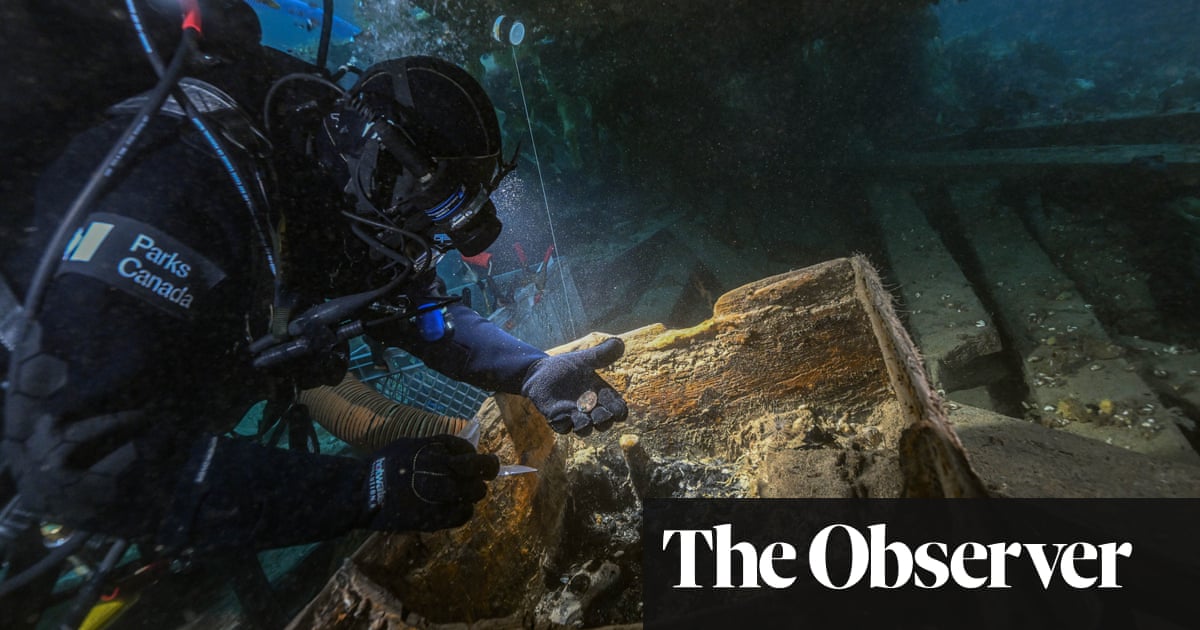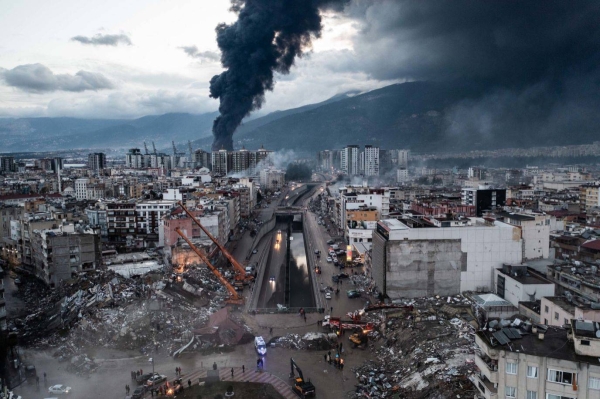
Archaeologists have made hundreds of new finds on the wreck of HMS Erebus, the ship commanded by Sir John Franklin on his doomed Arctic trip 180 years ago.
The team’s discoveries include pistols, sealed bottles of medicines, seamen’s chests and navigation equipment. These are now being studied for clues to explain the loss of the Erebus and its sister ship Terror, and the deaths of the 129 men who sailed on them.
The work is considered to be particularly urgent because the wreck of the Erebus – discovered 10 years ago in shallow water in Wilmot and Crampton Bay in Arctic Canada – is now being battered by increasingly severe storms as climate change takes its grip on the region.
“Parts of the ship’s upper deck collapsed recently and other parts are sloping over dangerously,” said Jonathan Moore, manager of the Parks Canada underwater team that completed the most recent exploration of the wreck. “It’s getting tricky down there.”
Investigators’ efforts were made even more pressing by Covid-19, which halted all exploration in 2020 and 2021, and by severe weather that badly disrupted investigations in 2018. As a result, marine archaeologists have been left in a race against time to unlock the vessel’s secrets.
Sir John Franklin set off from Greenhithe in Kent in 1845 to find the Northwest Passage, a polar route that linked the Atlantic and Pacific. His ships, Erebus and Terror, were fitted with steam-driven propellers to help them manoeuvre in pack ice while their holds were filled with three years’ worth of tinned provisions. The ships failed to return, however, and it was not until the 1850s that the Scottish explorer John Rae discovered, after interviewing Inuits, that Franklin had died in 1847 after his ships had been trapped in sea ice for two years. Later his men, by now starving, started to eat each other.
Victorian society was appalled and Rae was denounced, with his chief persecutor, Charles Dickens, claiming that the explorer had no right to believe “a race of savages”. Then, in 1997, the bones of several crewmen were discovered on nearby King William Island – with marks consistent with having been cut up and eaten. Trapped in the ice for years and afflicted by scurvy, starvation, and possibly lead poisoning from their poorly preserved tins of food, the men had suffered appalling fates.
But the exact sequence of events that led to the expedition’s survivors to leave their ship to make their desperate bid to seek salvation in the south seemed destined to remain a mystery – until the discovery of the wrecks of Erebus in 2014 and Terror in 2016. These now offer the tantalising prospect of understanding the precise unfolding of the catastrophe that overwhelmed the expedition and crew.
One report from Inuit legend indicates that at least one body remained on the Erebus after it was abandoned. Could this have been the corpse of Franklin? Could his body be lying in a casket in the hold of the Erebus, archaeologists have wondered. At present, investigation of the ship – which is proceeding with considerable caution, with explorers descending very slowly down through the wreck – has discovered no human remains.
On the other hand, a great many distinctive personalised remains have been discovered and brought to the surface, revealing intriguing details about those who manned the ship. In one cabin, believed to be that of Second Lieutenant Henry Dunda Le Vesconte, Moore and his colleagues found items that included an intact thermometer, a leather book cover and a fishing rod with a brass reel while a leather shoe, storage jars and a sealed pharmaceutical bottle were found in an area believed to represent the pantry of the captain’s steward.
The team has also begun excavating a seamen’s chest in the forecastle area, where most of the crew lived. Inside they have found pistols, bottles of medicines and coins. Archaeologists have also captured thousands of high-resolution digital photos that will be used to produce highly accurate 3D models which will be vital in understanding how the site is changing over time.
In the past, this work was exceptionally difficult to carry out, Moore pointed out. The sea above the wrecks is only free of ice for short periods, while diving in traditional scuba equipment has been difficult, cold and unpleasant. Most of the time, the sea temperature there is only one or two degrees above freezing.
But recent innovations had made investigations of Erebus far less intimidating, Moore added. “We have air supplied from the surface and we have heated suits, and that has made it much easier to work down there. In fact, we were able to make 68 dives for the 12 days we worked at the wreck in September. In that way we were able to do a lot more exploring and retrieval of artefacts.”
Virtually all this work has focused on the threatened Erebus. By contrast, Terror – which sank in deeper water about 45 miles away from the wreck of Erebus – is less at the mercy of the elements and was only visited briefly last year.
“Terror is 24 metres below sea level, but Erebus is only 11m down, and that makes the latter our prime concern,” said Moore.
“We are going to concentrate on it and peel back its story layer by layer.”












